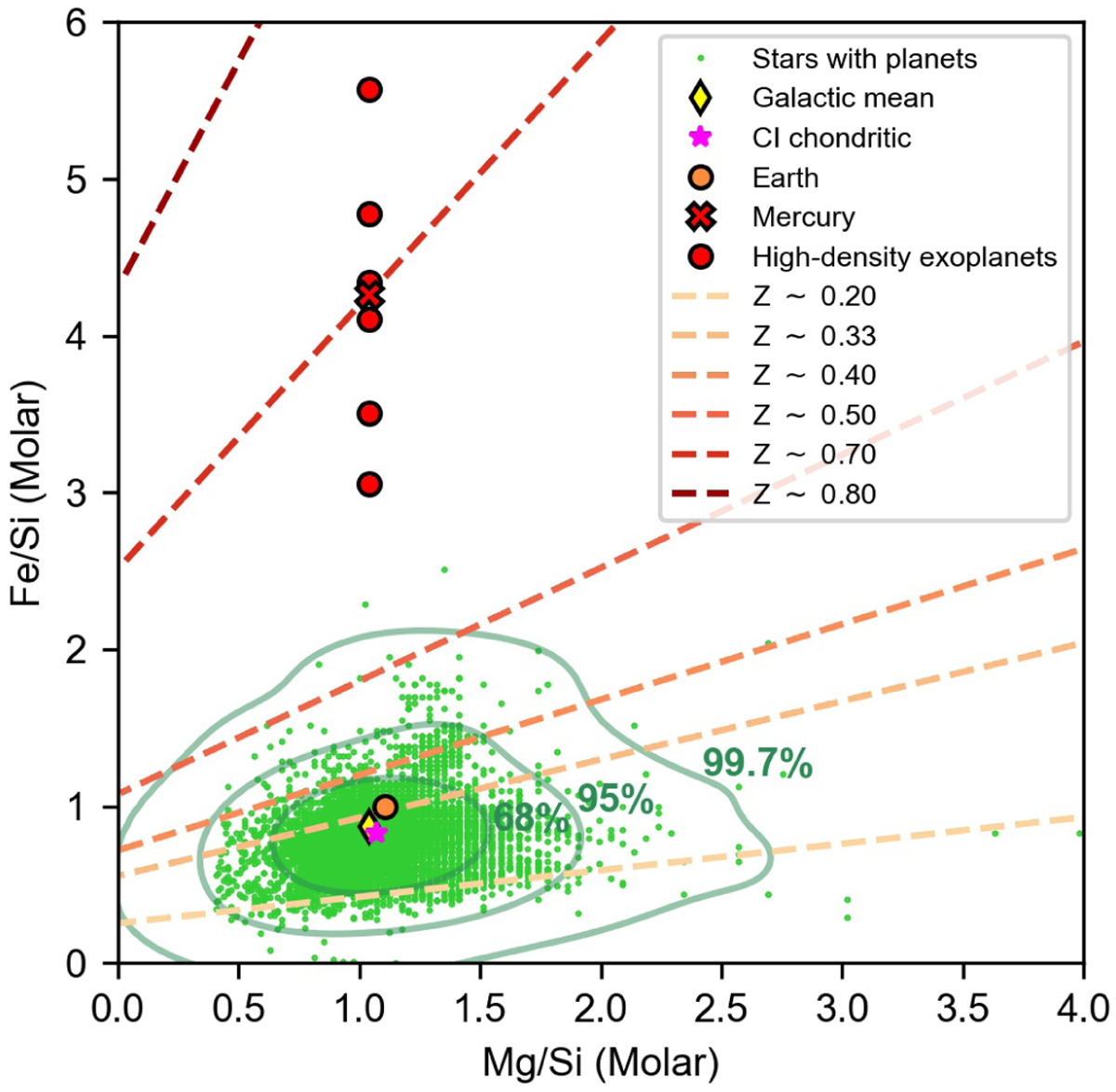Fig. 2

Download original image
Abundance of iron and rock-forming elements in the galactic neighborhood, selected planets, and meteorites. The green data points are the iron-to-silicon (Fe/Si) molar ratio versus magnesium-to-silicon (Mg/Si) molar ratio of stars with planets in the Hypatia catalog by Hinkel et al. (2014), along with the 68% (1σ), 95% (2σ) and 99.7% (3σ) isocontours, and the (Fe/Si, Mg/Si) of the CI carbonaceous chondrites, Earth, Mercury, and some of the high-density exoplanets in Table 1. The Fe/Si and Mg/Si values of the high-density exoplanets and Mercury are unknown. Here we assume that these planets have a Mg/Si equal to that of CI chondrites (the high-density nature of these planets does not change if other Mg/Si values are assumed). We then derive the bulk Fe/Si of planets from estimates of their core-mass fraction, Z, based on the measured masses and radii. We convert Z into Fe/Mg versus Si/Mg using Equation (13) from Unterborn et al. (2023), assuming that all the iron of the planet is in the core and that the mantle is composed of SiO2 and MgO. This plot is similar to Figure 7 from Unterborn et al. (2023), but here we plot only stars whose abundances [Fe/H], [Mg/H], and [Si/H] are known with uncertainties smaller than 30% and convert these values to molar ratios using the method by Hinkel et al. (2022).
Current usage metrics show cumulative count of Article Views (full-text article views including HTML views, PDF and ePub downloads, according to the available data) and Abstracts Views on Vision4Press platform.
Data correspond to usage on the plateform after 2015. The current usage metrics is available 48-96 hours after online publication and is updated daily on week days.
Initial download of the metrics may take a while.


